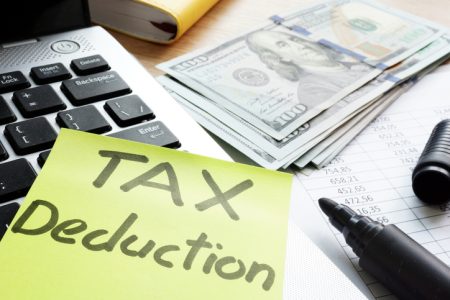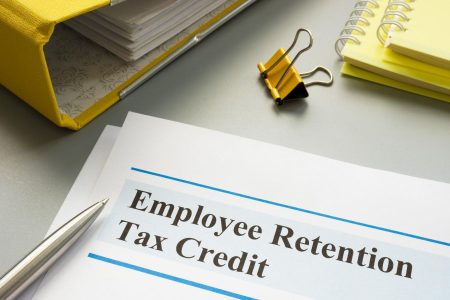If you earn income from rental properties, royalties, partnerships, S corporations, estates or trusts, you’ll likely need to submit Schedule E with your tax return. This supplemental federal income tax form, officially titled “Supplemental Income and Loss,” is where you report income beyond your regular wages or salary. Because of its complexity and potential impact on your tax bill, you may want to get professional assistance when filling it out. A financial advisor can help interpret the income sources, coordinate with your tax preparer, and evaluate how this income fits into your broader financial plan.
What Is a Schedule E Tax Form?
Schedule E is a tax form used to report income or loss from less common sources including rental real estate, royalties, partnerships, S corporations, estates and trusts. You’ll also use this form if your portfolio includes a residual interest in a real estate mortgage investment conduit (REMIC). File this form along with your Form 1040 or 1040-SR when you have income from these sources. The Schedule E tax form helps the IRS track income other than regular wages and salaries.
Completing Schedule E accurately is crucial because it directly affects your total taxable income. Losses from rental properties or other passive activities may be limited based on your participation level and income. Understanding these limitations can help you plan tax strategy effectively and avoid unexpected tax bills.
The complexity of Schedule E may warrant professional assistance. Tax preparation software such as TurboTax or H&R Block could handle the job, especially if your situation is straightforward. But you should note that the software only asks certain questions, and you have to know which questions weren’t asked. If you have multiple rental properties, complicated business structures, or significant passive income, consulting with a financial advisor or tax professional can help ensure compliance and maximize legitimate deductions. They can guide you through passive activity loss limitations and other complex tax rules.
Who Must Complete a Schedule E Tax Form?

If you have income or loss from rental properties, royalties, partnerships, S corporations, estates, trusts or residual interests in REMICs, you may need to file Schedule E. Here’s more on who must complete a Schedule E tax form:
- Rental property owners: If you own residential or commercial property that you rent to others, you’ll need to report this income on Schedule E. This includes single-family homes, apartment buildings, vacation properties and even renting out a room in your primary residence.
- Partnership participants: Individuals who receive income as a partner in a business partnership must report their share of the partnership’s income or loss on Schedule E (Form 1040), Part II, using information from Schedule K-1 (Form 1065). This applies whether you’re actively involved in running the business or a passive investor.
- S corporation shareholders: If you own shares in an S corporation, you’ll need to report your portion of the company’s income, losses, deductions, and credits on Schedule E (Form 1040), Part II, based on Schedule K-1 (Form 1120-S). S corporations pass these items through to shareholders for tax purposes.
- Recipients of trust or estate income: Beneficiaries who receive income from a trust or estate must report these distributions on Schedule E. The trustee or executor should provide you with a Schedule K-1 detailing your share.
- Royalty recipients: If you receive royalties from licensing agreements or royalties on something purchased rather than created or natural resources (oil, gas, minerals), these payments must be reported on Schedule E.
How to File a Schedule E Tax Form
Before starting your Schedule E, collect all relevant financial records. For rental properties, for example, gather information about rental income, property taxes, mortgage interest, insurance premiums and maintenance expenses. If you have partnership or S corporation interests, you’ll need your Schedule K-1 forms. Having these documents organized will make completing the form significantly easier.
If you own rental property, you’ll focus on Part I of Schedule E. List each property separately, including the physical address and type of property. Report the total rent received and all expenses associated with each property, including advertising, auto and travel, cleaning, insurance, repairs and depreciation (this allows you to recover the cost of the property over time and must be calculated annually). Calculate your net income or loss by subtracting expenses from rental income for each property. Part I also includes space for reporting royalties.
The remaining sections of Schedule E cover other income sources. Part II is for partnerships and S corporations, Part III for estates and trusts and Part IV for income from REMICs. Enter the appropriate information from supporting documents, such as K-1 forms, into the correct sections.
After completing all relevant sections, add up your net income or losses from each part and include that total on line 41. This total will be transferred to Schedule 1 of your Form 1040. Remember that passive activity loss limitations may apply, potentially limiting how much loss you can claim in the current tax year.
Once you’ve completed Schedule E, attach it to your Form 1040 when filing your tax return. Double-check all calculations and ensure you’ve included all required supporting documentation. If your tax situation involving Schedule E is complex, consider consulting with a qualified tax professional who can help ensure accuracy and identify potential deductions you might have missed.
Bottom Line

Filing Schedule E is an essential step for taxpayers with rental income, royalties, partnerships, S corporations, estates, or trusts. Remember that this form must be attached to your Form 1040 or 1040-SR and submitted by the regular tax filing deadline, typically April 15th, unless you request an extension. The process involves gathering relevant income statements, calculating expenses and determining profit or loss from each source. Be meticulous with your record-keeping throughout the year to make filing easier and more accurate.
Tax Planning Tips
- If you are looking for ways to lower your tax liability, a financial advisor who specializes in tax planning can help optimize your finances. Finding a financial advisor doesn’t have to be hard. SmartAsset’s free tool matches you with vetted financial advisors who serve your area, and you can have a free introductory call with your advisor matches to decide which one you feel is right for you. If you’re ready to find an advisor who can help you achieve your financial goals, get started now.
- SmartAsset’s tax return calculator has updated brackets and rates to help you estimate your next refund or balance.
Photo credit: ©iStock.com/Perawit Boonchu, ©iStock.com/Arsenii Palivoda, ©iStock.com/AaronAmat
Read the full article here












